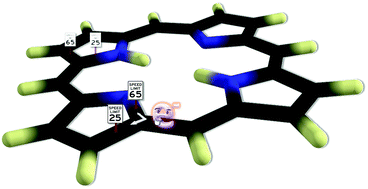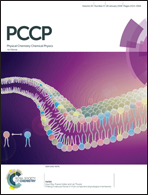New electron delocalization tools to describe the aromaticity in porphyrinoids†
Abstract
The role of aromaticity in porphyrinoids is a current subject of debate due to the intricate structure of these macrocycles, which can adopt Hückel, Möbius and even figure-eight conformers. One of the main challenges in these large π-conjugated structures is identifying the most conjugated pathway because, among aromaticity descriptors, there are very few that can be applied coherently to this variety of conformers. In this paper, we have investigated the conjugated pathways in nine porphyrinoid compounds using several aromaticity descriptors, including BLA, BOA, FLU and HOMA, as well as the recently introduced AV1245 and AVmin indices. All the indices agree on the general features of these compounds, such as the fulfillment of Hückel's rule or which compounds should be more or less aromatic from the series. However, our results evince the difficulty of finding the most aromatic pathway in the macrocycle for large porphyrinoids. In fact, only AVmin is capable of recognizing the annulene pathway as the most aromatic one in the nine studied structures. Finally, we study the effect of the exchange in DFT functionals on the description of the aromaticity of the porphyrinoids. The amount of exact exchange quantitatively changes the picture for most aromaticity descriptors, AVmin being the only exception that shows the same qualitative results in all cases.



 Please wait while we load your content...
Please wait while we load your content...